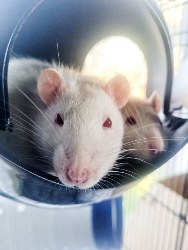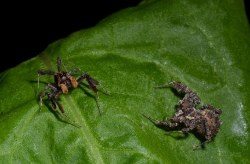UC researcher testing rockets flying 1400kmph on Peninsula
UC researcher testing rockets flying 1400kmph on Banks Peninsula

While most people will
be at the beach over summer, University of Canterbury senior
lecturer Chris Hann will be out on Bank’s Peninsula
testing rockets flying up to 1400kmph.
Dr Hann has won a UC summer scholarship to research data and understand dynamics of a small 38mm supersonic rocket.
He will be seeking supersonic trajectory and roll data to further develop a virtual rocket database where UC can test their own new self-correcting rocket control algorithms with realistic supersonic parameters.
It will also involve validation of a mathematical modeling which will predict the rocket roll response to given fin actuations before launch.
``With this system, supersonic data can be obtained effectively at low cost and the results will lead to a dramatic reduction in the number of test launches required to accurately describe rocket response”
``Our developed mathematical testing method can automatically adapt to remove the effect of disturbances that occur when the rocket goes through the sound barrier.
``This particular rocket is quite rare in that it has the ability to perform fin actuation at supersonic speeds and is very small, so is low cost.
Hann said the end benefit of the overall research was the development of a highly flexible rocket control module for a wide range of sizes and payloads that doesn’t require the usual large amount of test launches, computational fluid dynamics and expensive wind tunnel testing. It also had spin-offs into many other areas like machine control in complex terrain.
The rocket trajectory would be approximately straight, but the rocket orientation could vary 5-20 degrees in pitch due to atmospheric conditions and other disturbances.
The rocket has been designed and constructed by a third year UC mechanical engineering student and UC rocketry researcher Lachlan Matchett.
It will fly below the 2.5km controlled airspace boundary and will land back on Kaitoreke Spit. The design overcomes various significant Civil Aviation Authority requirements, road closures along the spit and a recovery boat from Akaroa.
Hann was awarded an $800,000 Rutherford Discovery fellowship last year and plans to develop a control system that would see a rocket keep its trajectory by correcting itself mid-flight when hit by disturbances, including shockwaves or turbulence. He wanted to develop the technology in rockets because if it could work in such an extreme environment, it could be used in many other applications.
ends


 Business Canterbury: Urges Council To Cut Costs, Not Ambition For City
Business Canterbury: Urges Council To Cut Costs, Not Ambition For City Wellington Airport: On Track For Net Zero Emissions By 2028
Wellington Airport: On Track For Net Zero Emissions By 2028 Landcare Research: ANZAC Gall Fly Release Promises Natural Solution To Weed Threat
Landcare Research: ANZAC Gall Fly Release Promises Natural Solution To Weed Threat NZ Anti-Vivisection Society: Auckland Rat Lovers Unite!
NZ Anti-Vivisection Society: Auckland Rat Lovers Unite! University of Canterbury: $1.35 Million Grant To Study Lion-like Jumping Spiders
University of Canterbury: $1.35 Million Grant To Study Lion-like Jumping Spiders Federated Farmers: Government Ends War On Farming
Federated Farmers: Government Ends War On Farming



